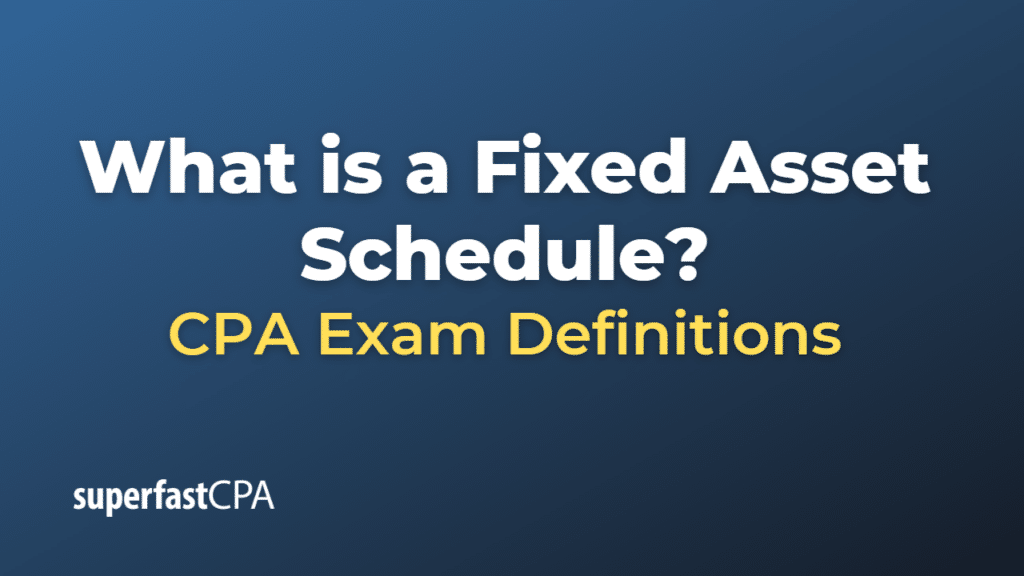Fixed Asset Schedule
A Fixed Asset Schedule is a detailed report that is a component of the financial statements, usually found in the notes and supplemental information that are part of a complete financial report. It lists all of a company’s fixed assets and provides detailed information about them. This schedule is created and maintained by the company’s accountants and is used by investors and financial analysts to assess the company’s investment in these long-term tangible assets.
Like the Fixed Asset Register, a Fixed Asset Schedule typically includes:
- Description of the asset
- Date of acquisition
- Asset cost
- Accumulated depreciation
- Net book value
However, while a Fixed Asset Register is primarily for internal use and might include very detailed operational information (like exact location of an asset), the Fixed Asset Schedule is more condensed and designed for external reporting purposes. It is structured in a way that reflects how these assets contribute to the overall value of the company and its operations.
Example of a Fixed Asset Schedule
| Asset Class | Cost at Start of Year | Additions | Disposals | Depreciation for the Year | Cost at End of Year | Accumulated Depreciation at End of Year | Net Book Value at End of Year |
|---|---|---|---|---|---|---|---|
| Land | $200,000 | $50,000 | $0 | $0 | $250,000 | $0 | $250,000 |
| Buildings | $500,000 | $0 | $0 | $20,000 | $500,000 | $120,000 | $380,000 |
| Vehicles | $100,000 | $20,000 | $10,000 | $22,000 | $110,000 | $44,000 | $66,000 |
| IT Equipment | $50,000 | $10,000 | $5,000 | $11,000 | $55,000 | $22,000 | $33,000 |
| Totals | $850,000 | $80,000 | $15,000 | $53,000 | $915,000 | $186,000 | $729,000 |
In this example, the Fixed Asset Schedule shows the movements and changes in the company’s fixed assets over the course of the year, including the initial cost, any new purchases (additions), sales or disposals of assets, the depreciation for the year, the total value of the assets at the end of the year, and the accumulated depreciation and net book value at year end.













